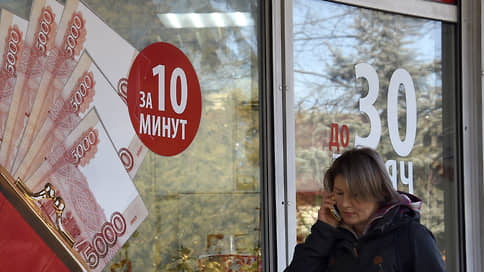MFOs can increase the size of loans to small and medium-sized businesses from 5 million rubles. up to 7 million rubles
[ad_1]

The limits of microloans available to small and medium-sized businesses (SMEs) may be increased from the current 5 million to 7 million rubles. Experts believe that increasing the threshold will be of interest mainly to state-owned microfinance organizations, while for other market participants the risks will be too great.
A bill on amendments to the law “On Microfinance Activities” has been submitted to the State Duma, suggesting the possibility of increasing the limits of microloans available to SMEs from the current 5 million to 7 million rubles. The initiators of the changes were deputies of the Legislative Assembly of the Krasnodar Territory.
The explanatory note to the project states that entrepreneurs themselves are asking for an increase in the loan limit available: “The business community… notes the potential opportunity to invest larger amounts of money in the financial and economic activities of entrepreneurs in order to effectively establish and (or) dynamic development”.
It is expected that the changes will have a positive impact on the formation of the property base of SMEs, including the growth of the financial stability of organizations (individual entrepreneurs), the sufficiency of their own working capital for current activities and the reduction of short-term obligations to other parties to contracts.
According to the Central Bank, at the end of the second quarter, SME loans accounted for approximately 11% of all issues and 19% of the core assets of MFOs. About a third of these loans were issued online. Compared to the previous quarter, the average loan sizes to individual entrepreneurs and legal entities did not change and amounted to 0.8 million and 1.3 million rubles. respectively. The microloan portfolio at the end of the second quarter increased to 400 billion rubles.
According to SRO MiR, SMEs account for every ninth loan issued. In general, they make up about 20% of the volume of core assets of MFOs. “Traditionally, small businesses experience difficulties in raising funds that are necessary for further development; for many, the only way out is to turn to microfinance organizations,” the SRO explains. “The increase in the limit amount is caused by modern realities: inflation, rising purchase prices against the backdrop of a weakened ruble – all this leads to the business requiring more funds.”
“However, microloans for the self-employed with close to 1 million rubles. checks have an extremely low share in the total portfolio and output of the entire market. This measure can only affect the amount of financing by state and municipal funds to support entrepreneurship,” says Ivan Uklein, director of banking ratings at Expert RA.
But since it is planned to introduce amendments to the federal law regulating the activities of all microfinance organizations without exception, regardless of who they are founded and controlled by, its provisions will apply to everyone without exception, emphasizes Yuri Fedyukin, managing partner of the law firm Enterprise Legal Solutions.
“The availability of any loan is determined by the interest and terms of its repayment, and setting limits is a practice aimed primarily at protecting the lender and, in the case of microfinance organizations, the lender’s creditors (investors),” explains Mr. Fedyukin. “Taking into account the next fall in the ruble exchange rate and The annual inflation rate requires revaluation of a significant part of the figures, including at the legislative level. Updating with an eye to reality and, possibly, the future in relation to the work of MFOs looks quite logical. If there is a demand for microloans from SMEs, why not satisfy it, especially since the size of the debt is not the only criterion when making a decision; no one has canceled the credit history.”
Director of the legal department of the financial marketplace “Sravni.ru” Yulia Suvorova also considers the initiative relevant: “Due to the tightening of bank lending standards, the demand for loans from microfinance organizations is growing.” However, the expert clarifies, with an increase in the maximum debt of an MFO, the credit risk per borrower will increase. Currently, according to Central Bank estimates, the share of overdue debt over 90 days in MFO portfolios is at 34%.
[ad_2]
Source link





